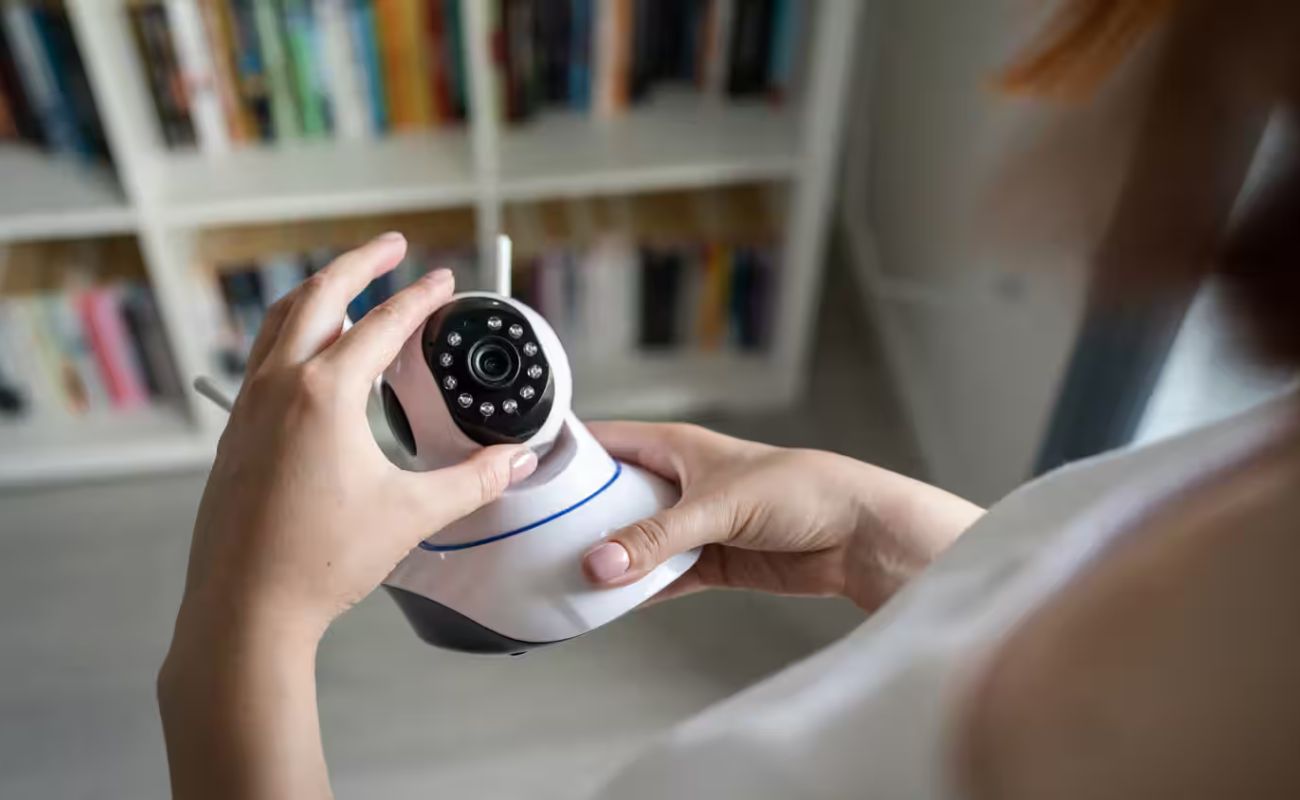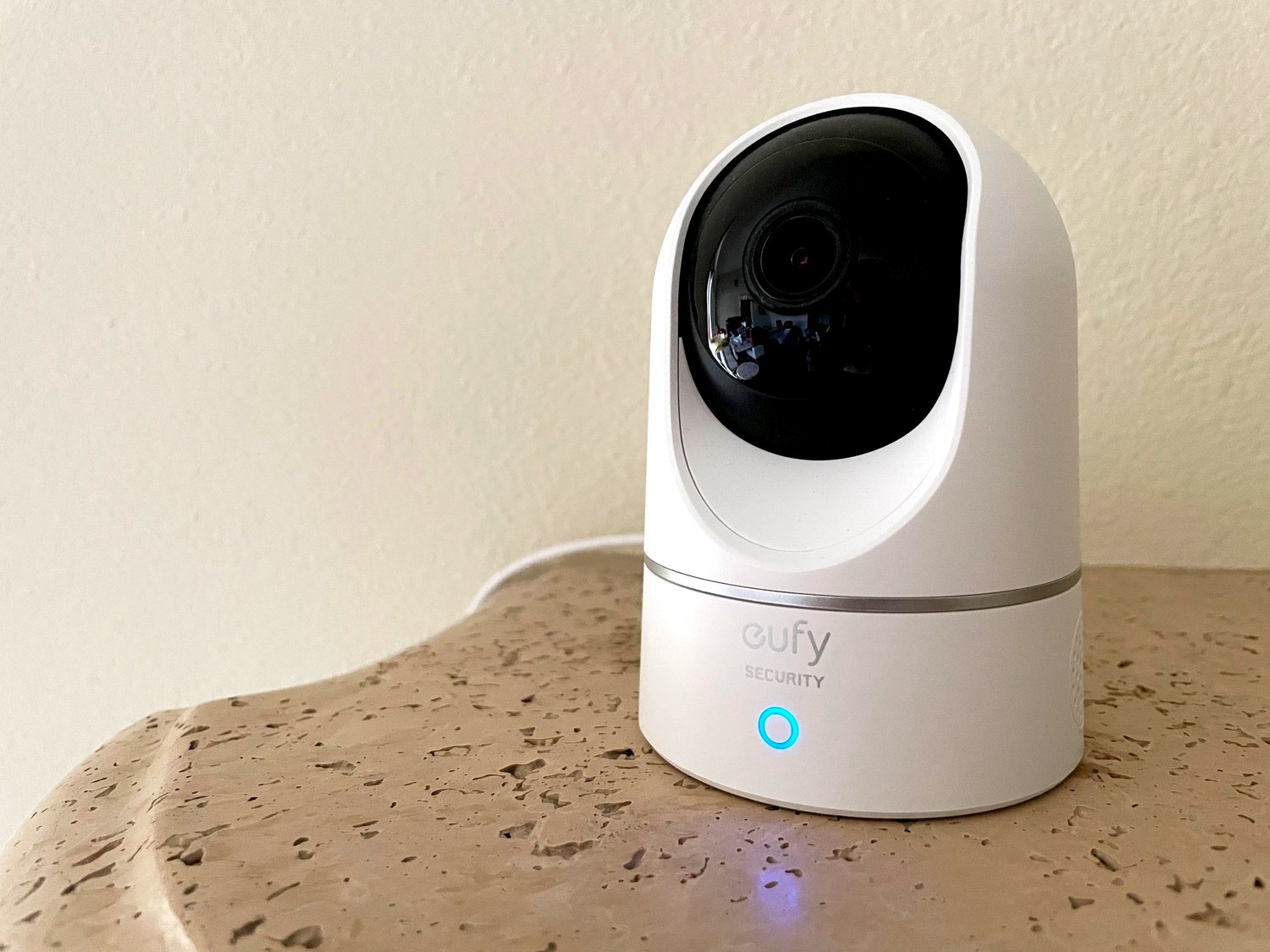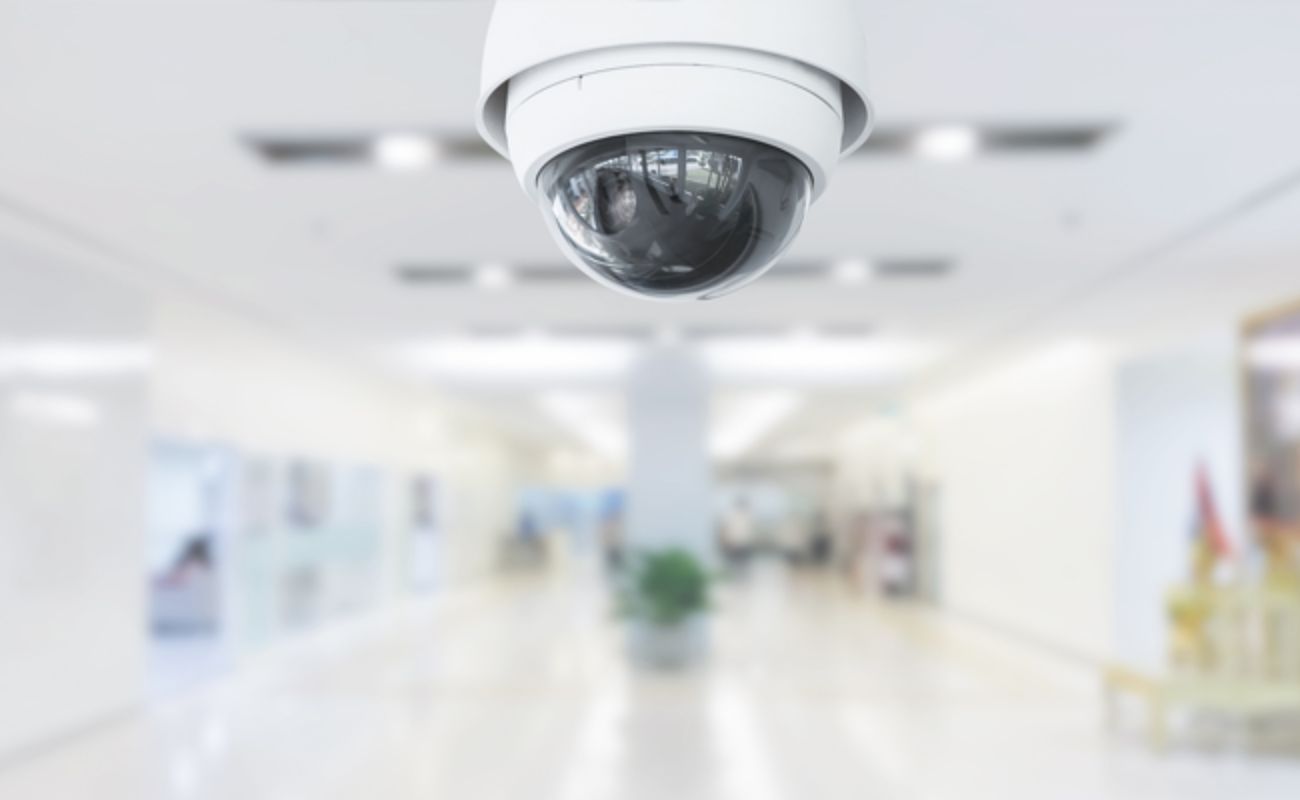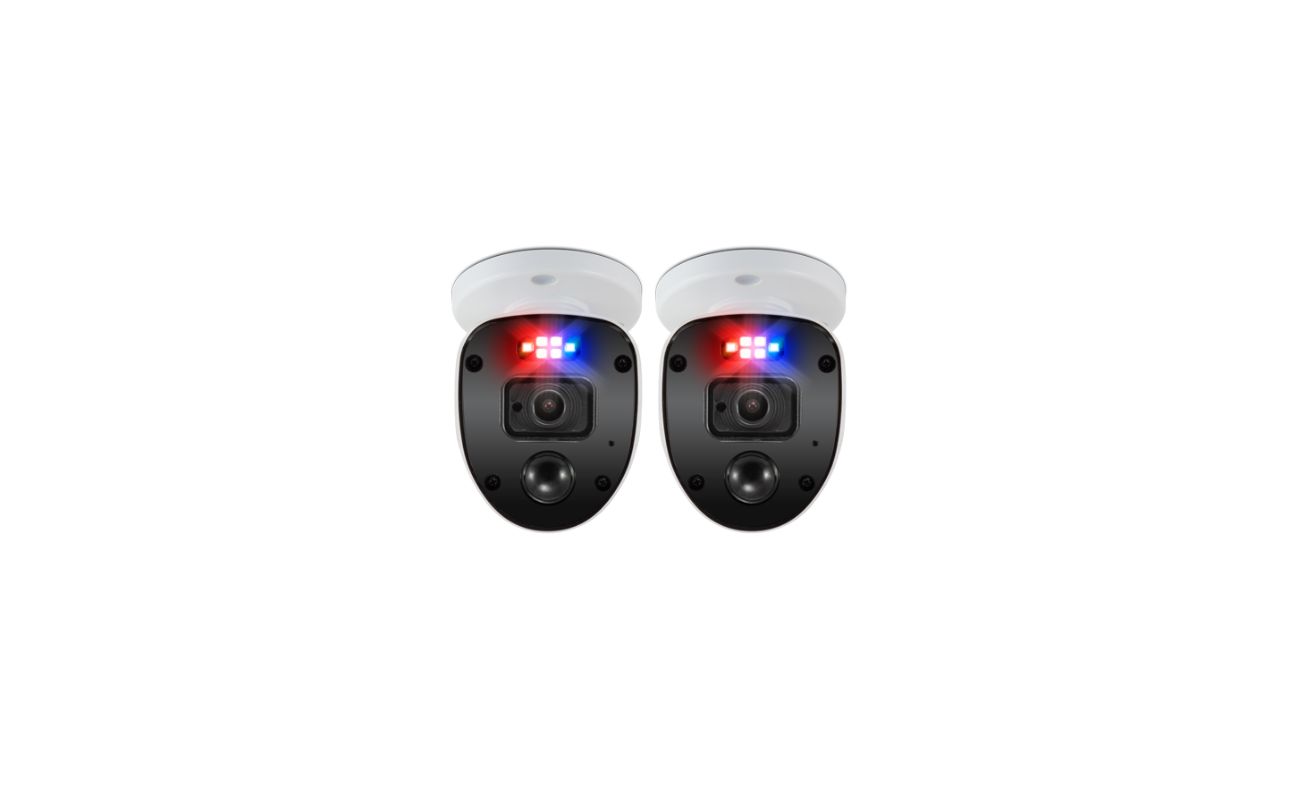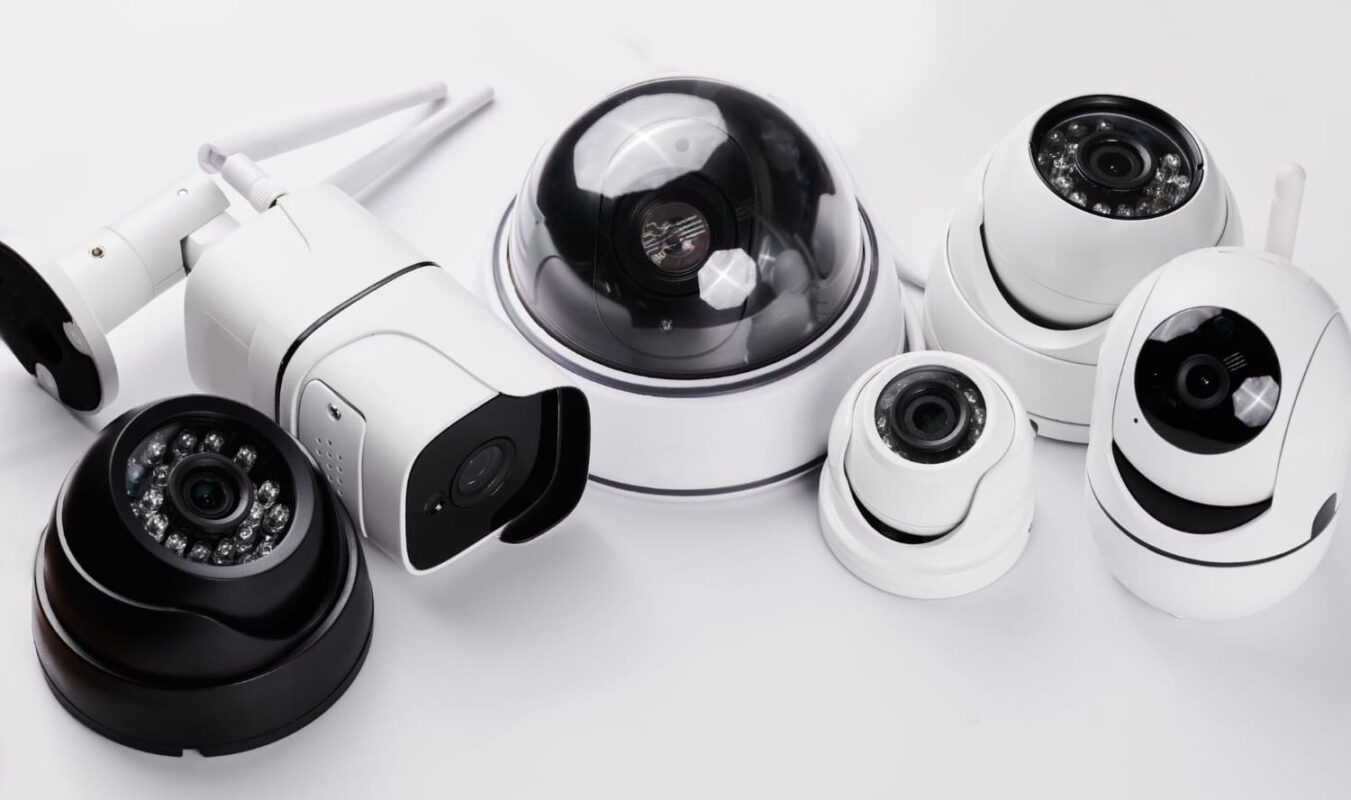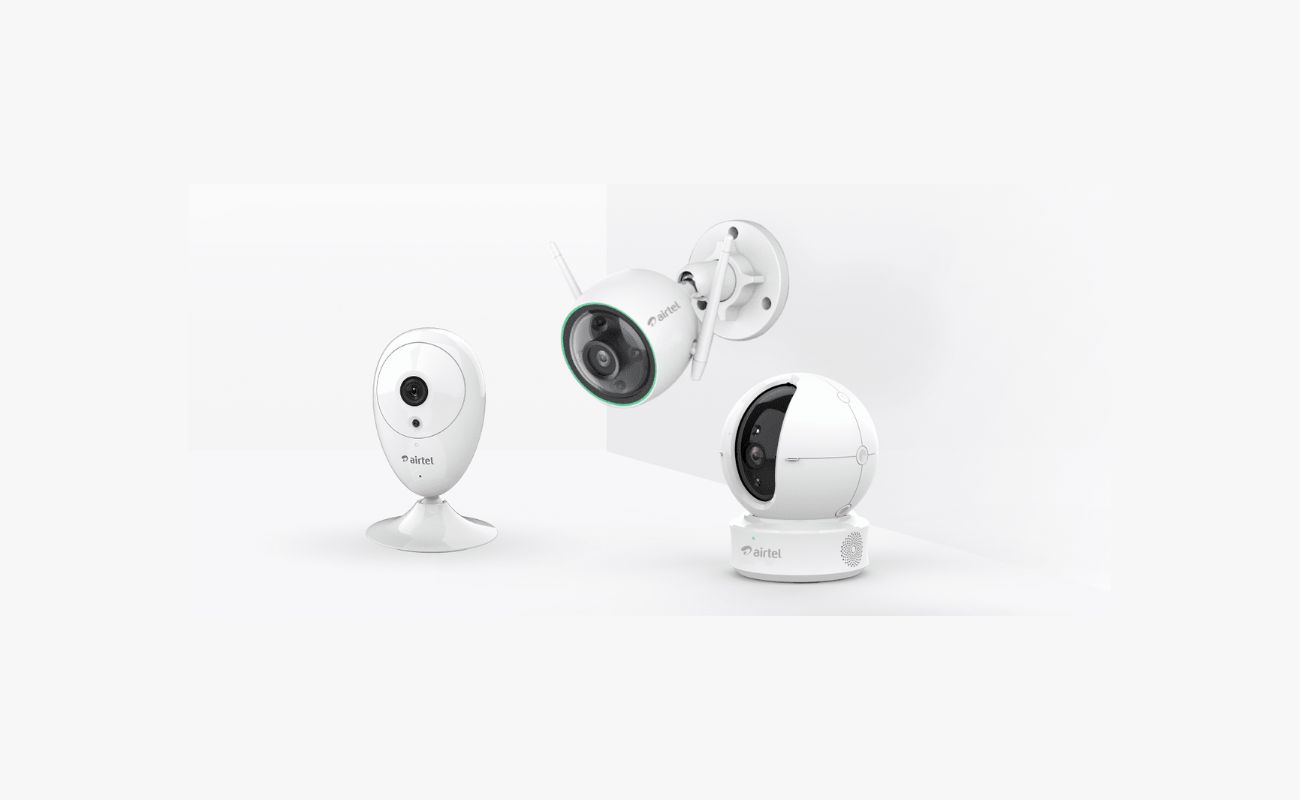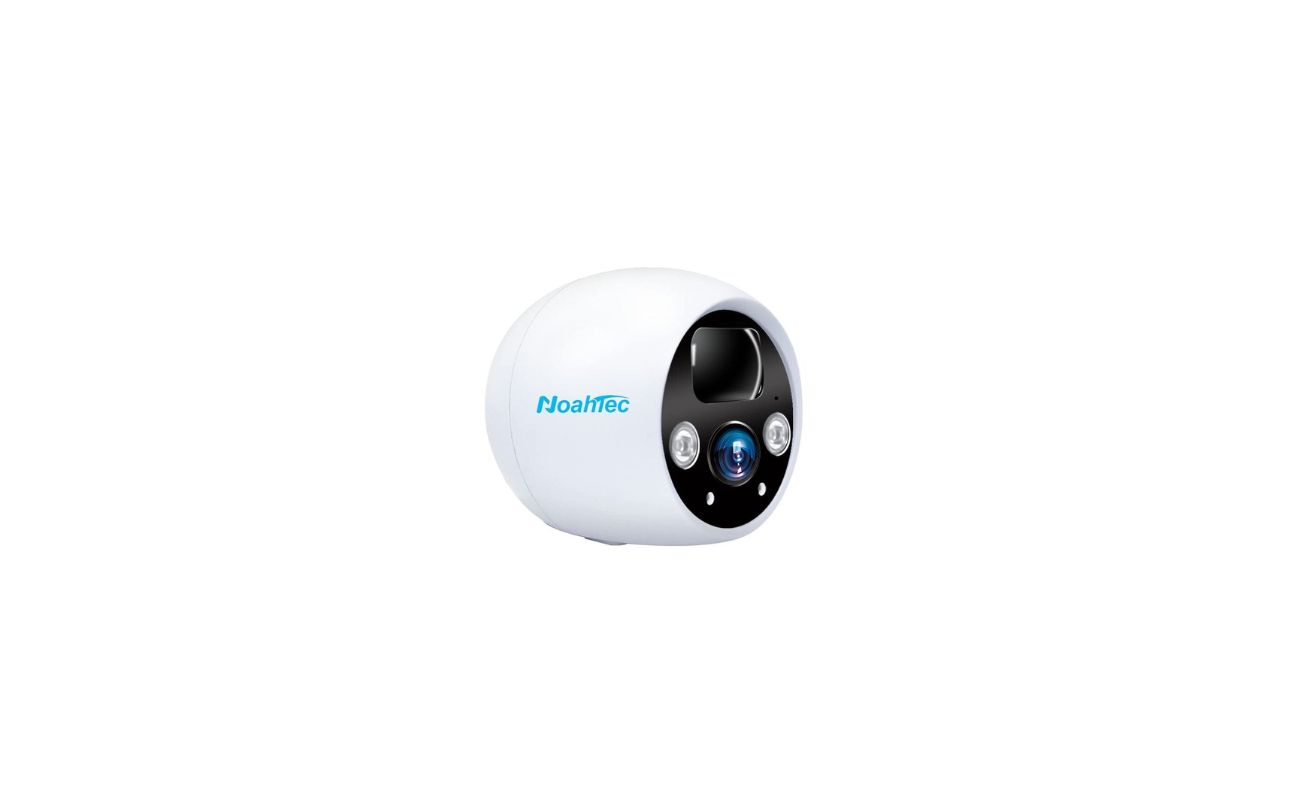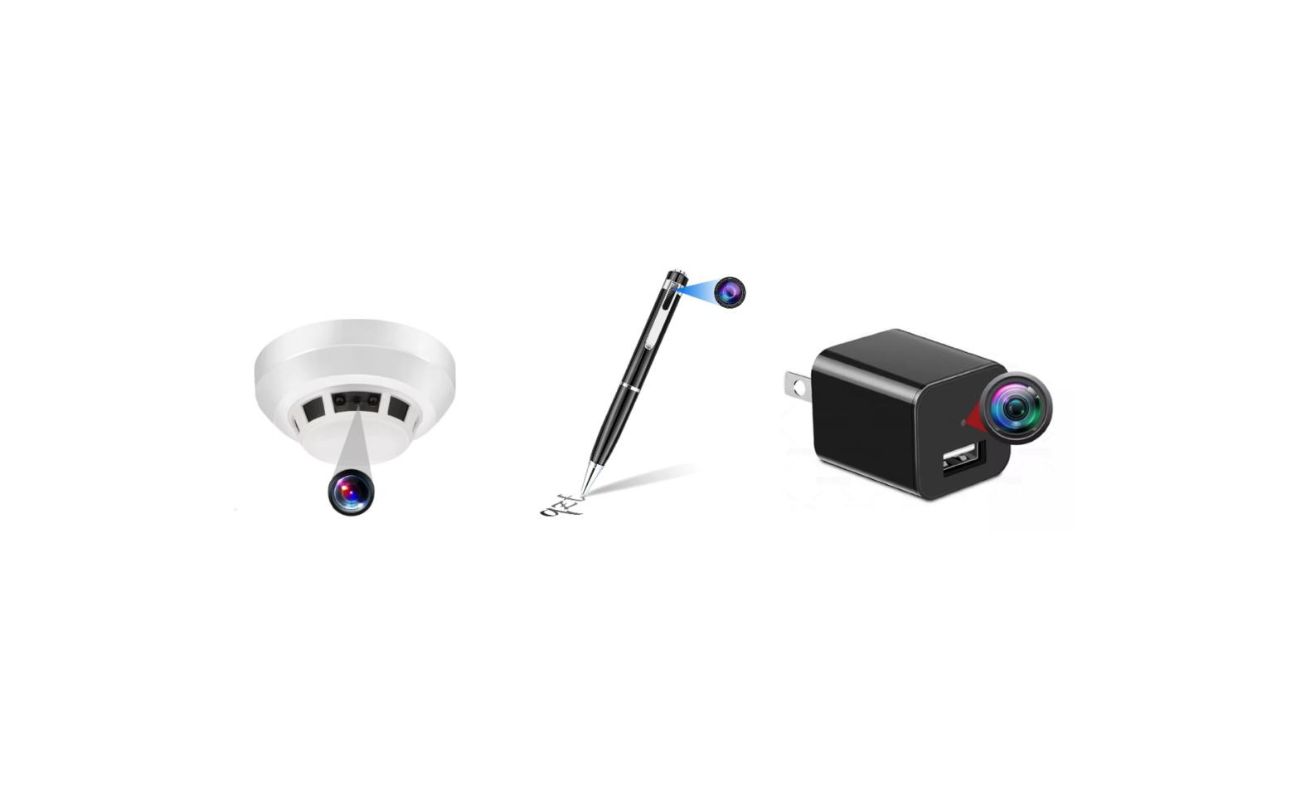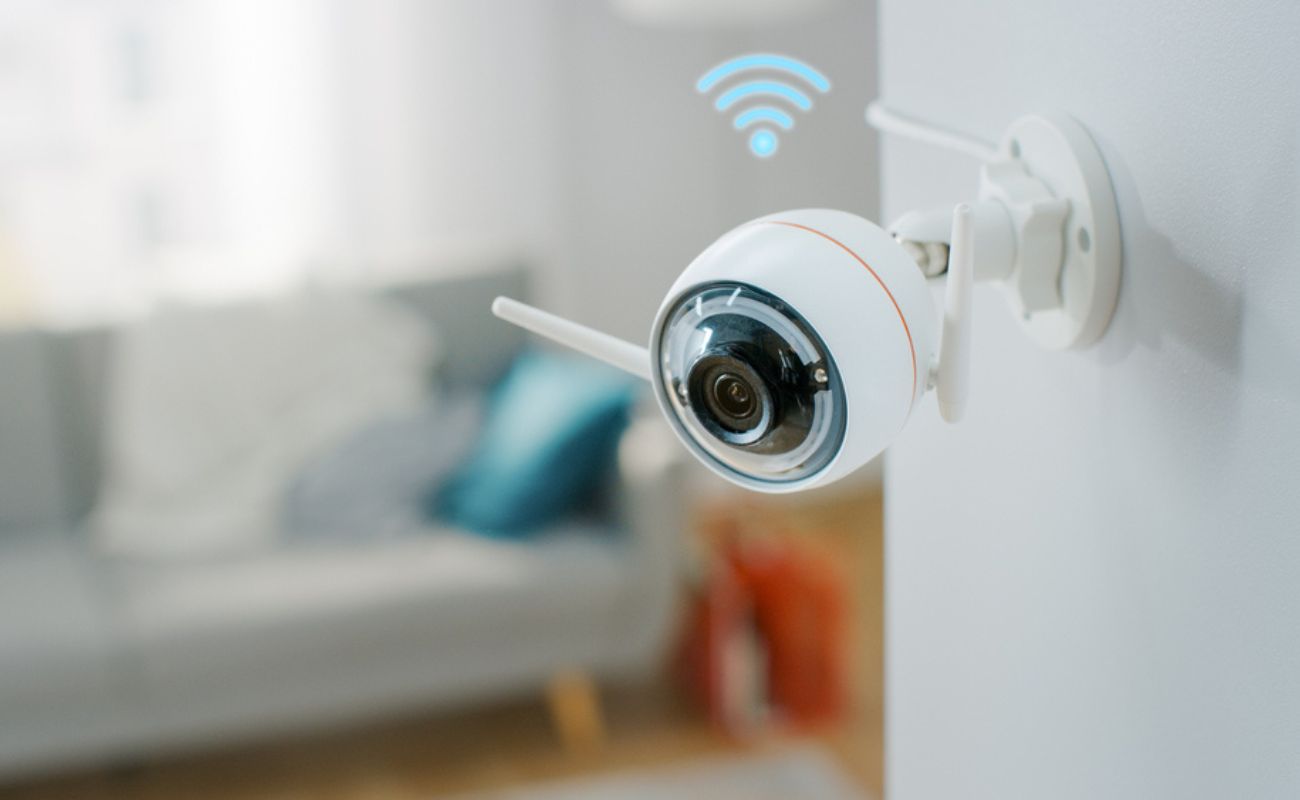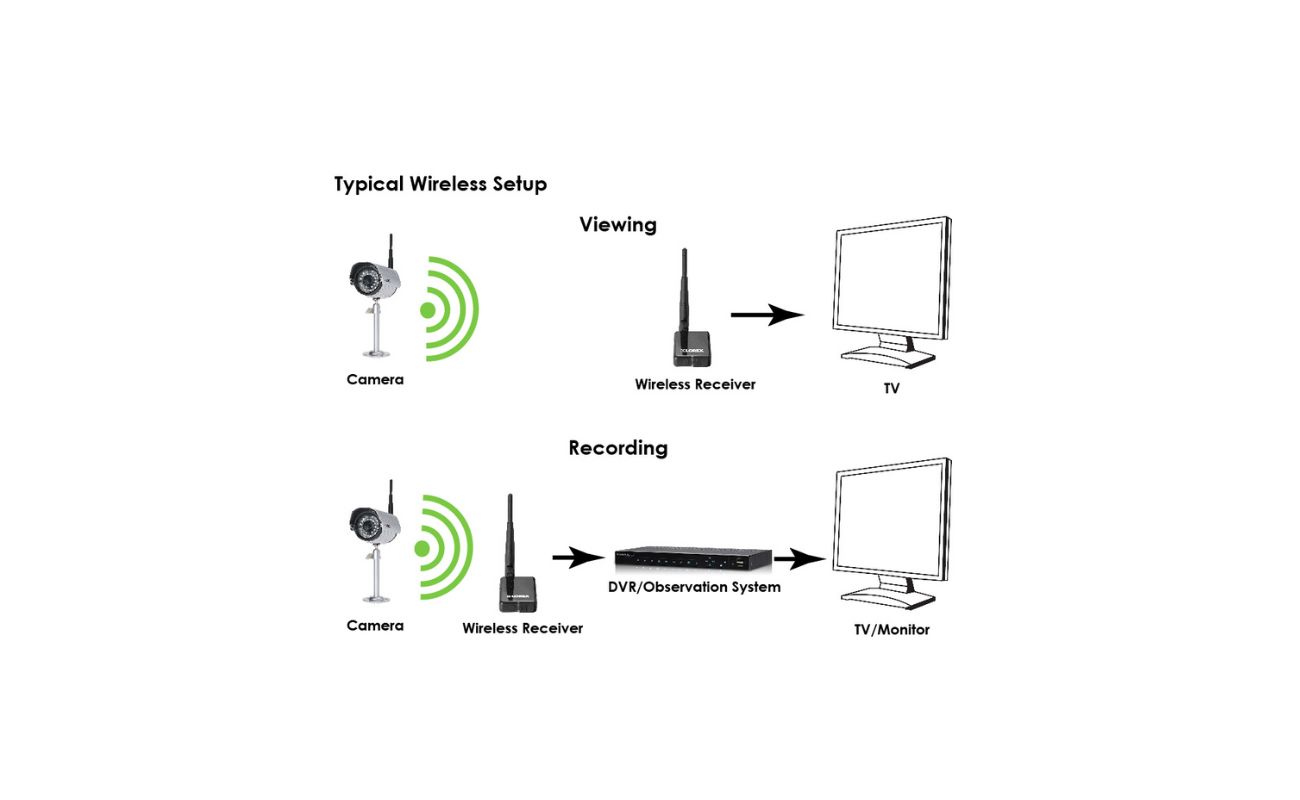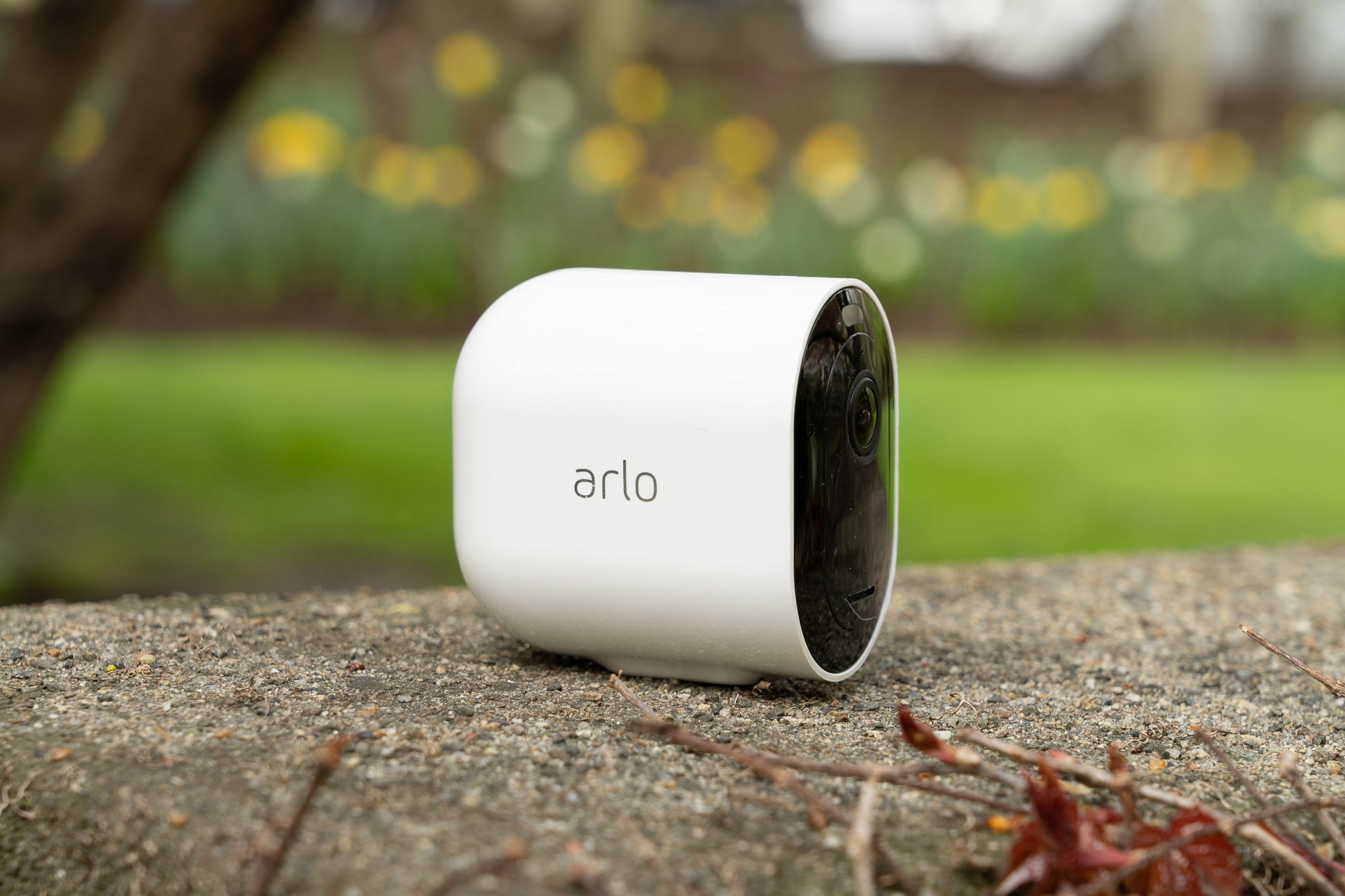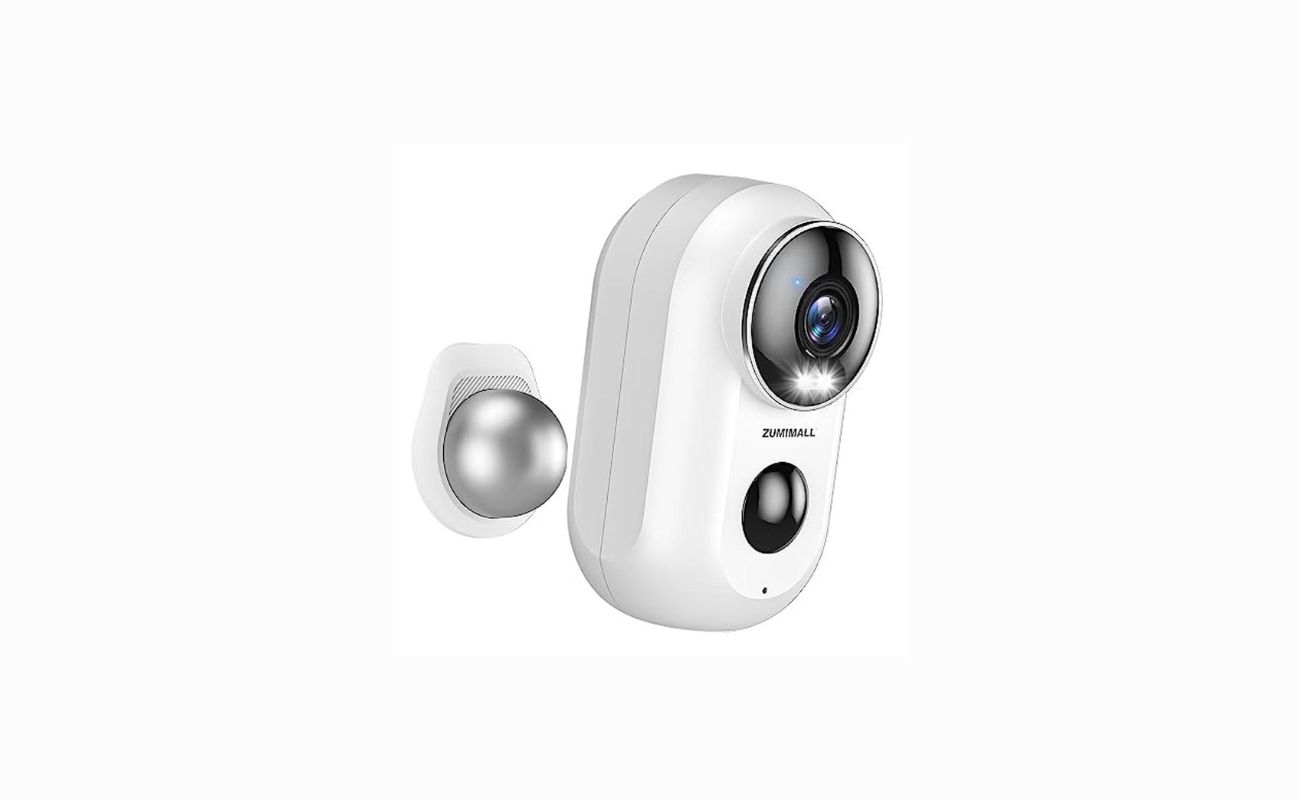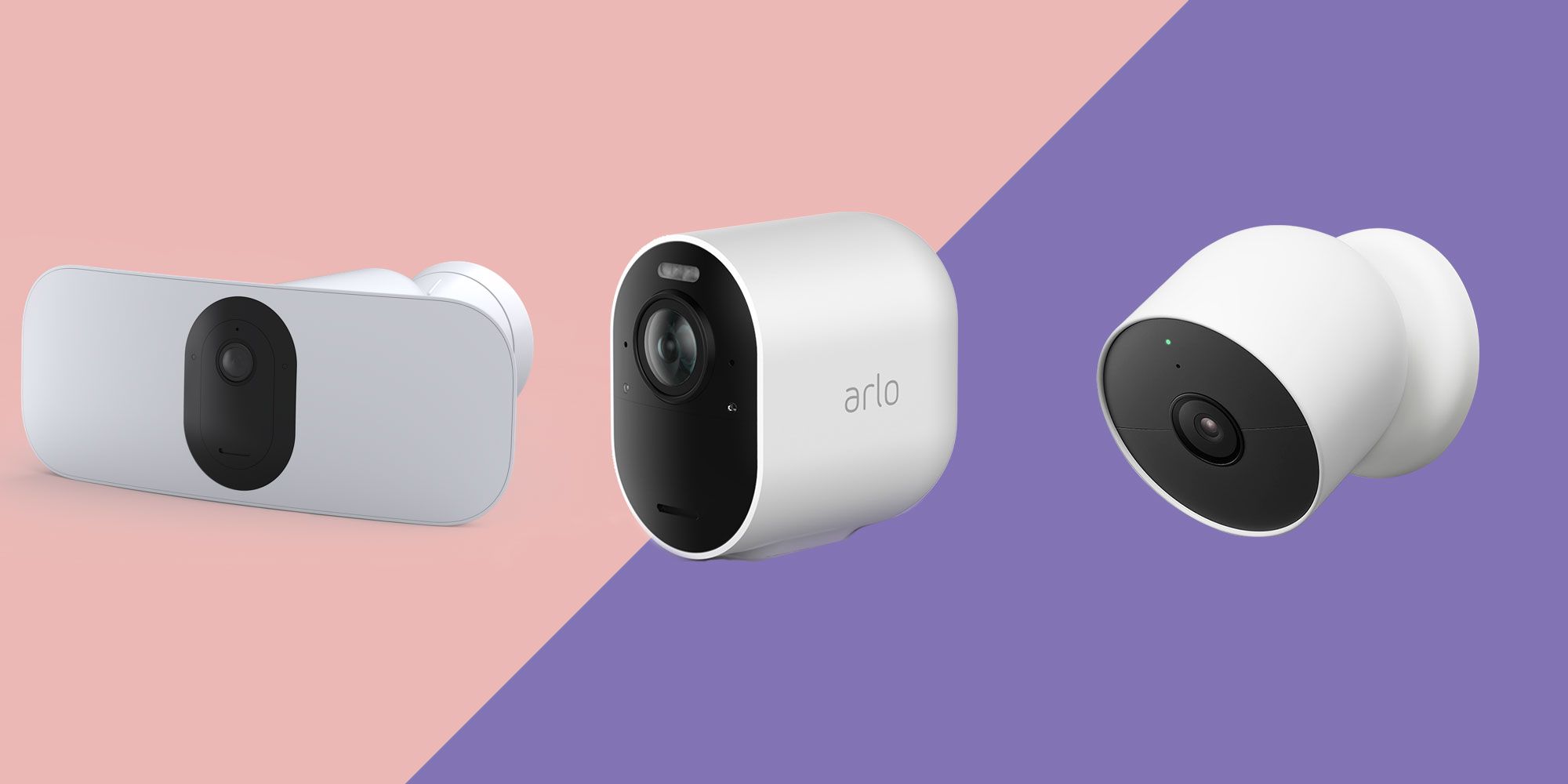Home>Home Security and Surveillance>How Does A Wireless Security Camera Need To Be Charged
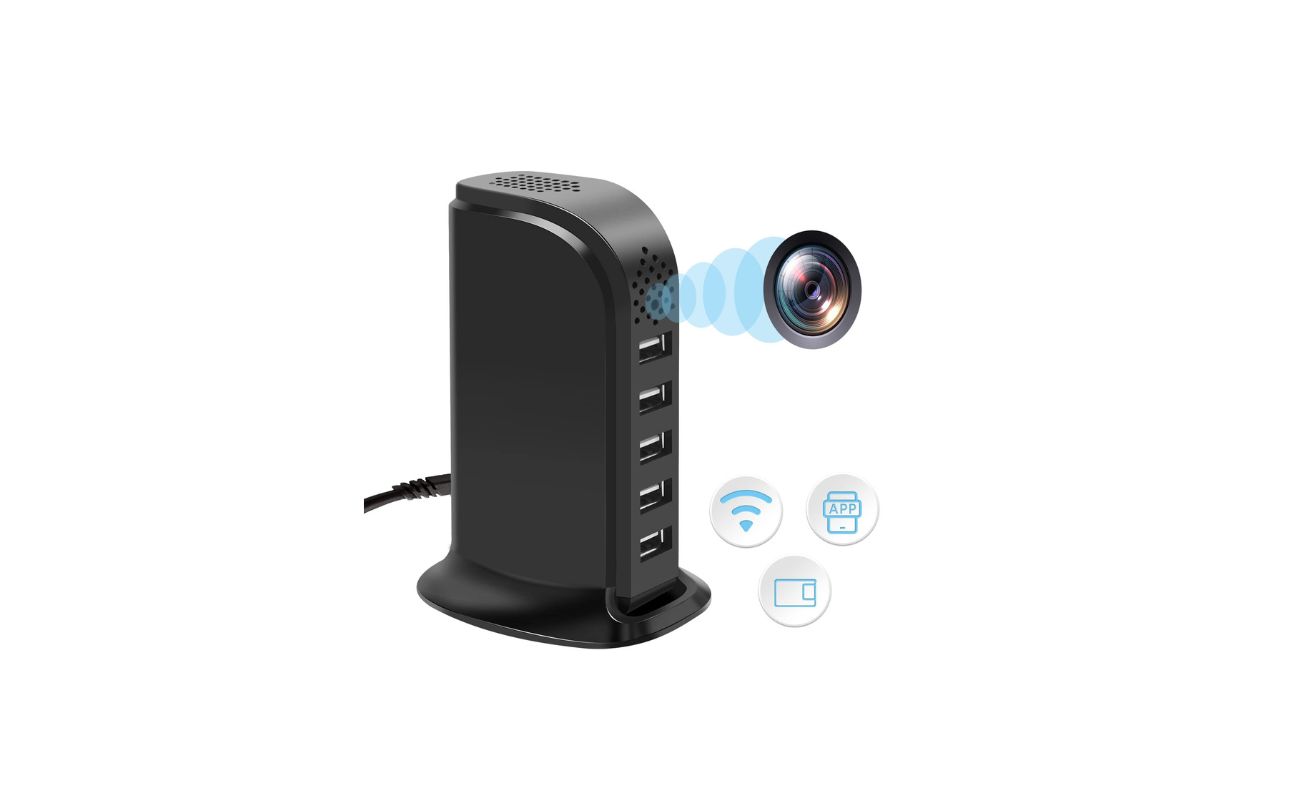

Home Security and Surveillance
How Does A Wireless Security Camera Need To Be Charged
Modified: March 6, 2024
Discover how wireless security cameras in home security and surveillance systems need to be charged. Learn the essentials to keep your property protected and monitor any potential threats.
(Many of the links in this article redirect to a specific reviewed product. Your purchase of these products through affiliate links helps to generate commission for Storables.com, at no extra cost. Learn more)
Introduction
Welcome to the world of home security and surveillance! In today’s rapidly changing technological landscape, homeowners are increasingly turning to wireless security cameras to keep a watchful eye on their properties. Unlike traditional wired cameras, wireless security cameras offer flexibility, convenience, and ease of installation. In this article, we will delve into the fascinating world of wireless security cameras and explore the various power sources that keep them running.
As the name suggests, wireless security cameras do not require physical cables to transmit data or power. They rely on alternative power sources to operate efficiently and effectively. Understanding the different power options available for wireless security cameras is essential for making an informed decision when it comes to selecting the right camera for your needs.
Let’s embark on a journey to understand the power sources used by wireless security cameras and explore the pros and cons of each option. Whether you are concerned about the environmental impact of your security system, the convenience of not having to change batteries frequently, or the reliability of a wired connection, we’ve got you covered!
Key Takeaways:
- Choose the right power source for your wireless security camera based on your needs and preferences. Battery-powered cameras offer flexibility, solar-powered cameras are eco-friendly, and hardwired cameras provide reliable surveillance.
- Consider factors like location, power supply reliability, maintenance, and budget when selecting a power source. Battery-powered cameras offer flexibility, solar-powered cameras are cost-effective, and hardwired cameras provide stable surveillance.
Understanding the Power Source of Wireless Security Cameras
Wireless security cameras rely on various power sources to operate. These power sources determine how the cameras function and how long they can operate without requiring a recharge or replacement. Understanding the power source of your wireless security camera is crucial for ensuring uninterrupted surveillance.
The most common power sources for wireless security cameras include batteries, solar power, and hardwired connections. Each power source has its own advantages and considerations, so let’s take a closer look at how they work.
Battery-Powered Wireless Security Cameras: Battery-powered cameras are highly versatile and can be installed virtually anywhere since they don’t require a power outlet. They are often simple to set up, making them a popular choice for DIY homeowners. The cameras are powered by rechargeable or replaceable batteries, providing flexibility and ease of use. However, it’s important to note that battery life varies depending on factors such as camera usage, recording quality, and environmental conditions. Regular monitoring and battery management are necessary to ensure continuous operation.
Solar-Powered Wireless Security Cameras: Solar-powered cameras harness energy from the sun to charge their batteries. These cameras are an excellent eco-friendly option that eliminates the need for frequent battery replacement or recharging. Solar panels installed on or near the camera convert sunlight into electricity, powering the camera and charging its battery. However, it’s worth noting that solar-powered cameras require sufficient sunlight exposure to operate effectively. In areas with limited sunlight or during prolonged periods of inclement weather, backup power sources may be necessary.
Hardwired Wireless Security Cameras: Hardwired cameras are connected directly to a power source through cables. They rely on a consistent and reliable power supply, ensuring uninterrupted operation. Hardwired cameras are often preferred in areas where a continuous power source is readily available, such as near electrical outlets or through Ethernet cables. These cameras spare you the hassle of monitoring battery life or ensuring sufficient sunlight exposure but may require professional installation due to the extensive wiring involved.
Understanding the different power sources for wireless security cameras allows you to choose the one that best suits your needs. Battery-powered cameras offer portability and ease of installation, while solar-powered cameras excel in energy efficiency and environmental friendliness. Hardwired cameras provide a consistent power supply for uninterrupted surveillance. Consider the unique requirements of your property and your preferences when selecting the power source for your wireless security camera.
Types of Power Sources for Wireless Security Cameras
Wireless security cameras rely on various power sources to ensure optimal performance. Understanding the different types of power sources available can help you make an informed decision when choosing a camera for your home security needs. Let’s explore the most common power sources for wireless security cameras:
1. Battery-Powered: Battery-powered cameras are a popular choice due to their flexibility and ease of installation. These cameras run on rechargeable or replaceable batteries, eliminating the need for a constant power supply. They can be placed virtually anywhere without the limitations of power outlets or wiring. Battery-powered cameras are ideal for homeowners who require flexibility in camera placement or who want a simple DIY installation process. However, it’s important to keep track of battery life and regularly recharge or replace the batteries to maintain uninterrupted surveillance.
2. Solar-Powered: Solar-powered wireless security cameras make use of renewable energy from the sun to operate. These cameras have built-in solar panels that charge their batteries during the day, allowing them to function even in remote locations without access to traditional power sources. Solar-powered cameras offer the advantage of environmental sustainability and can significantly reduce electricity costs. However, they require sufficient sunlight exposure to charge the batteries effectively. In areas with limited sunlight or during cloudy days, a backup power source may be necessary to ensure continuous surveillance.
3. Hardwired: Hardwired cameras are connected directly to a power source through cables. These cameras rely on a consistent power supply, ensuring uninterrupted operation. Hardwired cameras are typically powered through electrical outlets or Ethernet cables. They offer the advantage of a constant power source, eliminating the need to monitor battery life or rely on solar energy. However, installing hardwired cameras can be more complex and may require professional assistance due to the wiring involved. Additionally, the positioning of the cameras is limited to areas with access to power outlets or Ethernet connections.
4. Hybrid: Some wireless security cameras utilize a combination of power sources to enhance performance and reliability. Hybrid cameras may have a rechargeable battery as the primary power source, supplemented by solar panels for charging or for backup power. These cameras provide the flexibility of battery power with the added reliability of solar energy. Hybrid cameras are an excellent option for areas with moderate sunlight exposure or for homeowners who want a backup power source to ensure continuous surveillance.
By understanding the different power sources available for wireless security cameras, you can choose the one that best suits your needs and preferences. Battery-powered cameras offer flexibility, solar-powered cameras are environmentally friendly, hardwired cameras provide a constant power supply, and hybrid cameras offer a combination of power sources for enhanced performance. Consider your specific requirements and the availability of power sources in your area to determine the most suitable power source for your wireless security camera.
Battery-Powered Wireless Security Cameras
Battery-powered wireless security cameras are a popular choice among homeowners due to their flexibility and ease of installation. These cameras function without the need for a physical power outlet, making them highly versatile and convenient. Let’s take a closer look at the features, benefits, and considerations of battery-powered wireless security cameras.
Features:
- Portability: Battery-powered cameras can be placed virtually anywhere without the limitations of wiring or power outlets. This allows for flexible placement and easy repositioning as needed.
- Quick Installation: These cameras are typically designed for simple DIY installations, eliminating the need for professional assistance. They can be up and running in a matter of minutes.
- Wire-Free Operation: Battery-powered cameras are not constrained by cables or wires, allowing for a clutter-free setup. This feature makes them ideal for both indoor and outdoor surveillance.
- Wireless Connectivity: These cameras transmit data wirelessly to your chosen monitoring device, such as a smartphone or computer. This grants you remote access to live or recorded video footage.
- Rechargeable or Replaceable Batteries: Battery-powered cameras offer the option of rechargeable or replaceable batteries. Rechargeable batteries can be charged using a power adapter or USB cable, while replaceable batteries can be easily swapped out when depleted.
Benefits:
- Flexibility in Placement: Battery-powered cameras can be installed in areas where it may be challenging to run electrical wiring or find a nearby power source.
- Easy to Upgrade: Upgrading battery-powered cameras is hassle-free, as you only need to replace the camera without having to reconfigure the entire system.
- Cost-Effective: Battery-powered cameras often come at a lower upfront cost compared to wired alternatives, making them an affordable option for home security.
- Temporary Surveillance: If you are renting a property or only require temporary surveillance, battery-powered cameras offer a practical solution as they can be easily removed and reinstalled elsewhere.
Considerations:
- Battery Life: The longevity of battery-powered cameras depends on various factors, such as camera usage, recording quality, and environmental conditions. Regular monitoring and battery management are necessary to ensure uninterrupted surveillance.
- Battery Recharging or Replacement: Rechargeable batteries need to be regularly charged to maintain camera performance, which may require removing the battery and connecting it to a power source. Replaceable batteries need to be replaced when depleted, which may result in additional ongoing costs.
- Limited Continuous Recording: Battery-powered cameras may have limitations when it comes to continuous recording. To preserve battery life, these cameras often use motion-activated recording or schedule-based settings. This may lead to potential gaps in recorded footage.
Battery-powered wireless security cameras offer convenience, flexibility, and easy installation. They are an excellent choice for homeowners who require portability, temporary surveillance, or a cost-effective security solution. However, it’s important to consider factors such as battery life, recharging/replacement requirements, and continuous recording limitations when choosing a battery-powered camera for your home security needs.
Solar-Powered Wireless Security Cameras
Solar-powered wireless security cameras are an innovative and environmentally-friendly option for homeowners who prioritize energy efficiency and sustainability. These cameras harness the power of the sun to operate and offer a range of benefits. Let’s delve into the features, advantages, and considerations of solar-powered wireless security cameras.
Features:
- Solar Panels: Solar-powered cameras are equipped with built-in solar panels that capture sunlight and convert it into electricity. These panels are designed to maximize energy absorption even in low-light conditions.
- Battery Storage: Solar-powered cameras come with a built-in battery storage system that stores the energy generated by the solar panels. This allows the camera to operate even when sunlight is not available, such as during nights or cloudy days.
- Wire-Free Operation: Like other wireless security cameras, solar-powered cameras do not require physical cables or wiring for data transmission, providing a clean and clutter-free installation.
- Remote Monitoring: Solar-powered cameras utilize wireless connectivity, allowing you to access the live or recorded video footage from your preferred monitoring device, such as a smartphone or computer, from anywhere at any time.
- Environmentally Friendly: Solar-powered cameras are an eco-friendly option as they rely on renewable solar energy, reducing the carbon footprint associated with traditional power sources.
Advantages:
- Energy Efficiency: Solar-powered cameras use clean and renewable solar energy, reducing electricity consumption and lowering energy costs in the long run.
- Cost Savings: Once installed, solar-powered cameras operate independently of the electrical grid, eliminating the need for ongoing power costs.
- Reliability: Solar-powered cameras with a sufficient battery storage system can operate uninterrupted even during power outages or when there is no direct sunlight available for an extended period.
- Easy Installation: Solar-powered cameras are typically designed for simple DIY installation, eliminating the need for professional assistance and complex wiring procedures.
- Remote Locations: Solar-powered cameras are ideal for surveillance in remote areas where traditional power sources may not be readily available.
Considerations:
- Sunlight Availability: Solar-powered cameras rely on sunlight to charge their batteries. Placement in areas with limited or obstructed sunlight exposure may affect the camera’s performance.
- Weather Conditions: Cloudy or rainy days with minimal sunlight can impact the camera’s solar charging capabilities. Consider a backup power source or alternative power options for consistent surveillance in regions with unpredictable weather patterns.
- Battery Capacity: The capacity of the camera’s built-in battery storage system determines how long the camera can operate without sunlight. Monitoring battery levels and adjusting camera settings may be necessary to ensure continuous surveillance.
- Placement Considerations: Solar panels require proper positioning for optimal sunlight absorption. Consider the placement of the camera and solar panels to maximize energy capture throughout the day.
Solar-powered wireless security cameras offer an eco-friendly and cost-effective solution for home surveillance. They provide energy efficiency, cost savings, and reliable operation, all while reducing environmental impact. However, it’s important to consider sunlight availability, weather conditions, battery capacity, and proper camera placement when opting for solar-powered cameras. With careful consideration and planning, you can enjoy the benefits of sustainable and reliable surveillance for your home.
To ensure your wireless security camera stays charged, make sure to use the recommended power adapter and charging cable. Regularly check the battery level and recharge as needed to keep your camera functioning properly.
Hardwired Wireless Security Cameras
Hardwired wireless security cameras are connected directly to a power source through cables, providing a reliable and continuous power supply. These cameras offer a range of benefits and considerations that homeowners should be aware of when considering this power source for their surveillance system.
Features:
- Direct Power Connection: Hardwired cameras are connected to a power source through cables, ensuring a consistent and uninterrupted power supply for continuous operation.
- Stable Connection: These cameras rely on a wired connection for data transmission, providing a stable and reliable connection without the risk of signal interference.
- Flexible Placement: Hardwired cameras can be positioned in any location with access to a power outlet or Ethernet connection, allowing for versatile placement options.
- Wire-Free Data Transmission: Despite being hardwired for power, these cameras still utilize wireless technology for data transmission, enabling remote access to live or recorded video footage.
Advantages:
- Reliability: The direct power connection of hardwired cameras ensures uninterrupted operation, even during power outages or when batteries need to be replaced or recharged.
- Consistent Power Supply: Hardwired cameras eliminate the need to monitor and manage battery life, providing peace of mind that the camera will continuously operate without interruption.
- Secure Connection: The wired connection of hardwired cameras offers enhanced security by minimizing the risk of signal interference or hacking attempts that can occur with wireless connections.
- Wide Range of Placement Options: With access to a power outlet or Ethernet connection, hardwired cameras can be installed in various locations, both indoors and outdoors.
Considerations:
- Professional Installation: Hardwired cameras often require professional installation due to the wiring involved. This adds to the upfront cost and may require hiring a certified technician.
- Limitations in Placement: Hardwired cameras must be installed in locations with access to power outlets or Ethernet connections. This can limit placement options compared to battery-powered or solar-powered cameras that offer more flexibility.
- Complex Installation Process: Running cables and setting up a wired connection can be more complex than installing battery-powered or solar-powered cameras. It may require drilling holes, concealing cables, and ensuring proper cable management.
- Reliance on Power Source: Hardwired cameras are dependent on the continuous availability of a power source. Power outages or issues with the electrical system can disrupt camera operation until power is restored.
Hardwired wireless security cameras offer a reliable and consistent power supply for uninterrupted surveillance. With a stable connection and versatile placement options, these cameras are a preferred choice for areas with readily available power sources. However, it’s important to consider the professional installation required, limitations in placement, and the reliance on a power source when opting for hardwired cameras. By weighing the advantages and considerations, you can make an informed decision about the power source that best suits your home security needs.
Power Consumption and Battery Life
Power consumption and battery life are crucial factors to consider when choosing a wireless security camera. Understanding how these factors impact the camera’s performance can help you make an informed decision and ensure uninterrupted surveillance. Let’s explore power consumption and battery life in detail.
Power Consumption:
- Video Recording Quality: Higher video quality, such as HD or 4K, generally requires more power to process and transmit the data. Consider the balance between video quality and power consumption based on your surveillance needs.
- Camera Features: Additional features like night vision, motion detection, and two-way audio may increase power consumption as these functionalities require continuous monitoring and processing of data.
- Live Streaming: Keeping the camera’s live stream active for extended periods can impact power consumption. Consider the need for constant live streaming versus activating it only when necessary to conserve power.
- Wireless Connectivity: Maintaining a stable wireless connection for data transmission also consumes power. Optimize your Wi-Fi signal strength and positioning to minimize power usage.
Battery Life:
- Battery Capacity: The capacity of the camera’s battery determines how long it can operate before requiring a recharge or replacement. Higher battery capacity generally leads to longer battery life.
- Camera Usage: Factors like the frequency of motion detection triggers, streaming duration, and recording length directly impact battery life. Manage these settings to balance surveillance needs with battery conservation.
- Environmental Conditions: Extreme temperatures, whether hot or cold, can affect battery performance. Consider cameras with temperature-resistant batteries if you live in environments with extreme weather conditions.
- Battery Management: Regularly monitoring the battery level and implementing effective battery management practices, such as scheduling power-saving modes or using motion-triggered recordings, can extend battery life.
Considerations:
- Power Source: Different power sources have varying impacts on power consumption and battery life. Battery-powered cameras require regular recharging or battery replacement, while solar-powered and hardwired cameras offer continuous power supply without the need for frequent attention.
- Backup Power: Having a backup power source or an uninterruptible power supply (UPS) can ensure camera operation during power outages, preventing gaps in surveillance coverage.
- Camera Placement: Consider the placement of your camera to optimize power consumption. Avoid placing cameras in direct sunlight for extended periods, which can increase power draw and potentially affect battery life.
- Manufacturer Specifications: Each camera model will have its own power consumption and battery life specifications provided by the manufacturer. Read these specifications carefully to gauge the camera’s performance capabilities.
By understanding power consumption and battery life factors, you can make an informed decision when selecting a wireless security camera. Consider your surveillance needs, power source preferences, and the camera’s specifications to strike a balance between optimal performance and efficient power usage. Proper battery management and optimization can ensure that your wireless security camera operates reliably and provides continuous surveillance coverage.
Factors to Consider When Choosing a Wireless Security Camera Power Source
When selecting a power source for your wireless security camera, it’s important to consider several factors to ensure optimal performance and meet your specific needs. The power source you choose will impact the camera’s functionality, convenience, and overall effectiveness. Let’s explore the key factors to consider when choosing a wireless security camera power source.
1. Location and Placement:
- Consider the location where you plan to install the camera. Is there easy access to a power outlet or Ethernet connection? If not, battery-powered or solar-powered cameras may be more suitable due to their flexibility in placement.
- If you have a specific area in mind for the camera’s installation, assess its proximity to power sources. This will determine the feasibility of a hardwired camera or the need for battery-powered or solar-powered options.
2. Power Supply Reliability:
- Assess the reliability of the power supply in your area. Are power outages common? If so, you may want to consider a battery-powered or solar-powered camera that can provide continuous surveillance during power disruptions.
- For areas with stable power supply, hardwired cameras can be a reliable option as they do not rely on batteries or solar panels.
3. Maintenance and Lifespan:
- Consider the maintenance requirements for each power source. Battery-powered cameras will require regular battery management, including charging or battery replacements.
- Solar-powered cameras may require occasional cleaning of the solar panels to ensure efficient energy absorption.
- Hardwired cameras generally require minimal maintenance once installed, as long as the power source remains reliable.
4. Environmental Impact:
- If you prioritize environmental sustainability, solar-powered cameras are an excellent choice. They rely on renewable solar energy and can significantly reduce carbon emissions associated with traditional power sources.
- Battery-powered cameras can also be environmentally friendly if you use rechargeable batteries and properly dispose of old batteries.
5. Budget Considerations:
- Consider the upfront costs and ongoing expenses associated with each power source. Battery-powered cameras are often more affordable initially, but ongoing battery replacements or recharging costs should be factored in.
- Solar-powered cameras have higher upfront costs but no ongoing power expenses once installed.
- Hardwired cameras may have higher upfront installation costs due to the need for professional assistance and wiring.
6. Surveillance Requirements:
- Assess your specific surveillance needs, including the desired camera features, monitoring capabilities, and recording quality.
- Battery-powered cameras offer flexibility in placement and easy installation, making them suitable for temporary or wireless applications.
- Solar-powered cameras provide continuous surveillance without the need for regular battery management or power outlets.
- Hardwired cameras offer a reliable power supply and are best for areas where a stable power source is readily available.
By considering these factors, you can make an informed decision when choosing a power source for your wireless security camera. Assess your location, power supply reliability, maintenance requirements, environmental impact, budget, and surveillance needs to select the power source that best aligns with your preferences and requirements. Whether it’s battery-powered, solar-powered, or hardwired, the right power source will ensure effective and uninterrupted surveillance to keep your home safe and secure.
Conclusion
Choosing the right power source for your wireless security camera is essential for ensuring effective surveillance and peace of mind. Whether you opt for battery-powered, solar-powered, or hardwired cameras, each power source has its own set of benefits and considerations.
Battery-powered cameras offer flexibility in placement, easy installation, and portability. They are a great option for those who require a wireless and DIY installation process. However, it’s important to monitor battery life and manage recharging or battery replacement to avoid interruptions in surveillance.
Solar-powered cameras are environmentally friendly and offer the advantage of continuous operation without the need for ongoing power expenses. They harness renewable solar energy, providing an eco-conscious and cost-effective solution. However, placement should be considered to ensure sufficient sunlight exposure for optimal performance, especially in areas with limited sunlight or during inclement weather.
Hardwired cameras provide a reliable power supply and eliminate the need for battery management. They offer a stable connection and are suitable for areas with easy access to power outlets or Ethernet connections. Professional installation may be required due to the wiring involved, but once installed, these cameras provide consistent surveillance.
When choosing a power source, factors such as location and placement, power supply reliability, maintenance requirements, environmental impact, budget considerations, and surveillance needs should be taken into account.
Ultimately, selecting the right power source depends on your specific requirements, preferences, and the unique characteristics of your property. Consider the features and benefits of each power source and weigh them against your priorities to make an informed decision.
By understanding power consumption, battery life, and the factors to consider, you can confidently choose a wireless security camera power source that meets your needs and provides reliable and effective home surveillance. Enhance the safety and security of your home with the right wireless security camera power source, and enjoy peace of mind knowing that your property is under constant watch.
Frequently Asked Questions about How Does A Wireless Security Camera Need To Be Charged
Was this page helpful?
At Storables.com, we guarantee accurate and reliable information. Our content, validated by Expert Board Contributors, is crafted following stringent Editorial Policies. We're committed to providing you with well-researched, expert-backed insights for all your informational needs.
